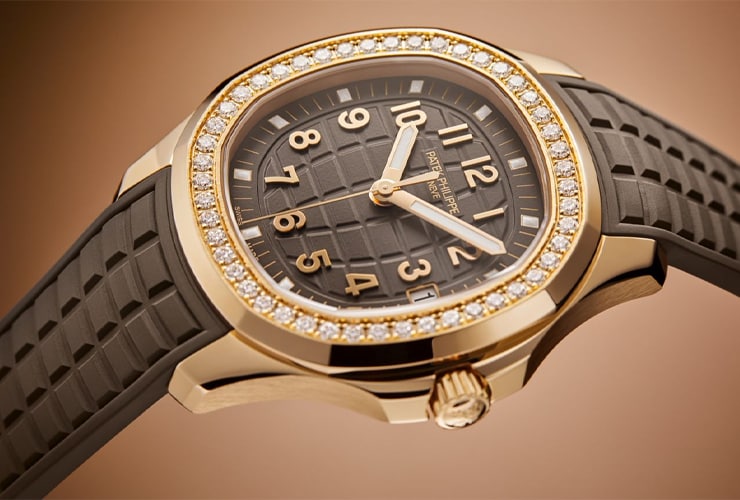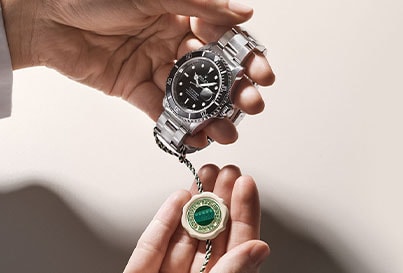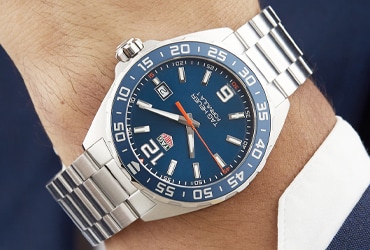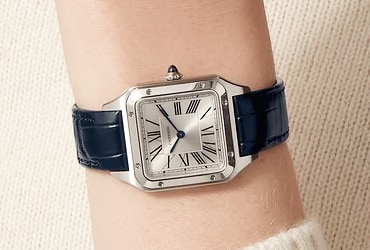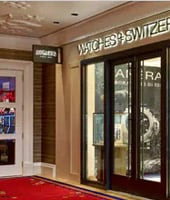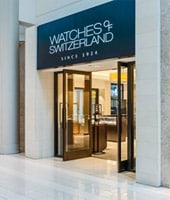An Expert’s Guide To Choosing A Luxury Watch
By Sarah Jayne Potter | 8 minute read
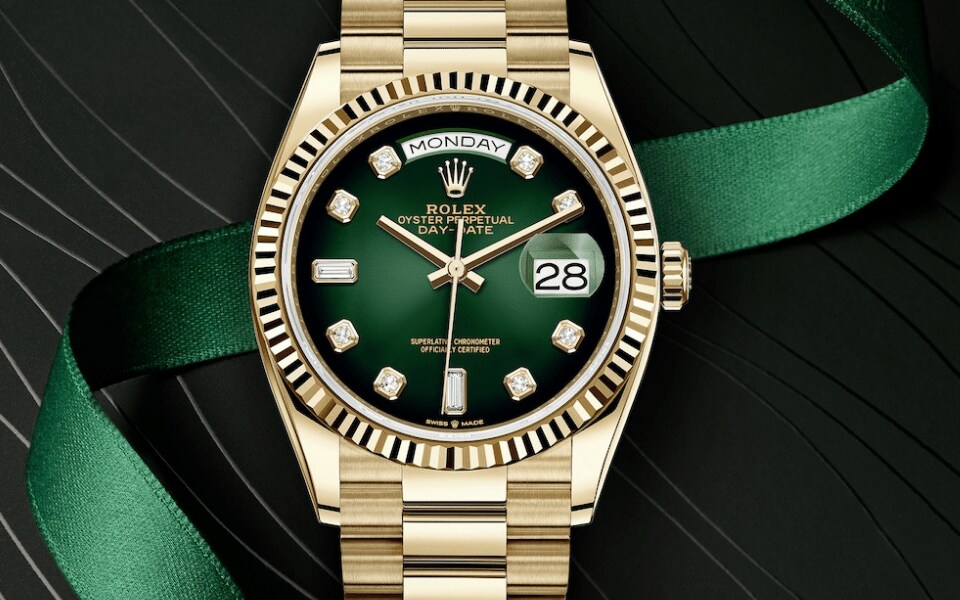
A luxury timepiece is a significant purchase, not only in price point but in terms of emotional investment as well. Perhaps you’re marking a personal milestone, wish to pass something down to future generations, or maybe it’s an investment opportunity? Whatever the intention, one thing remains unchanging for all watch buyers: it’s a personal decision.
When it comes to choosing your timepiece, it’s not unusual to feel excited or even overwhelmed. The choice of brands, styles, and technology can make it tricky to determine which is the right watch for you and your lifestyle.
To help you make that decision, we’ve teamed up with our Head of Watch Buying, Mark Toulson and International Watch Buyer, Faye Soteri for their expert advice on choosing a luxury watch.
Firstly, set your budget
As a rough guide, we’d say that a good introduction to the world of timepieces could cost around £1,000. Renowned brands such as Longines and Oris are ideal places to begin your search, as they will provide a wealth of options for this kind of price point.
Moving upwards to the £3,000-5,000 mark, Breitling, OMEGA, and TAG Heuer will all provide beautiful mechanical watches that stand the test of time. These are ideal for those looking for a heritage piece.
Then we come to the higher-end of the scale, with timepieces that feature more intricate complications and precious metals. Rolex and Patek Philippe are the brands you may want to be looking at here, not simply for their prestige but the innovation and attention to detail that has secured their places as world leaders in haute horlogerie

“The complex knowledge and sheer amount of time required to create such a sophisticated piece of engineering is reflected in a watch’s prestige and price point. This makes budget a crucial consideration when it comes to determining which luxury timepiece to buy. Watches of this quality can cost anything from £500 and reach all the way up to seven figures, so having a price in mind will create a starting point for you to work with." Faye Soteri, International Watch Buyer for
The Watches of Switzerland Group
For those looking to luxury timepieces as an investment, there are a few more factors to consider. Rolex is always a good place to start for investment pieces, as is anything that’s limited edition. You’ll also find it’s not unusual to be placed on a waiting list to purchase a particular high-end model. This is actually a positive thing as it means that watch should gain value over time. A good rule of thumb is that the smaller the amount of models made, the higher the value it will become.
Having made its debut in 1956 and as the timepiece of choice for influential people, the Rolex Day-Date 36 (pictured in the featured image) - available in only 18ct gold or platinum – is a classic choice worthy of its price tag.
Then consider your style
Understandably, style is one of the most important considerations when it comes to choosing your luxury timepiece. From the colour of the dial to the material of the strap, it’s a statement on your wrist that will be with you for many years to come, through a variety of events and occasions. It’s something to wear and to enjoy.
There are many different watch styles, taking functional and design inspiration from the world of aviation to the depths of the deep sea. Let’s take a look at some of them:
- Dress watches. Designed to be worn with formal attire, although nowadays it’s common for dress watches to be paired with semi-formal and casual business wear. Simplicity and elegance are key here, with limited complications on display.
- Pilot watches. Simplistic in style and larger than most other timepieces, the aim for pilot watches is to be highly legible and easy to operate. This makes them more of a practical timepiece, most at home with a casual business look.
- Divers watches. With a dial that’s typically uncluttered and high contrasting, diving watches are rooted in their need to be legible underwater and in low light. The vast majority also tend to feature a rotatable bezel for timing a dive. To be called a ‘diving watch’ they must feature a water resistance greater than 330ft.
- Military watches. Originally designed for timekeeping under tough physical conditions, military watches are typically robust and crafted from impact-resistant material, also featuring high luminosity. They tend to come in a more muted colour palette.
- Racing watches. Two complications define a racing watch: a chronograph (which is a stopwatch function) and a tachymeter (which tracks travel time or measured distance, based on speed). Visually, racing watches are a little more flamboyant, with more exotic colour and style options.
Of course, the world of luxury timepieces also comes with a few sartorial principles which you may want to adhere to. These include never wearing a rubber watch strap with a suit, and ensuring that any leather accessories match the leather strap of your watch.

"Your style is a reflection of your personality, letting the world know who you are without having to utter a single word. A luxury timepiece should do exactly the same. Think about the colours that complement your wardrobe, the design that sparks an emotional connection. Ask yourself ‘is this timepiece bold enough, elegant enough?.’ Explore thoughts around your own perception of style before you decide what is worthy enough to rest on your wrist.” Mark Toulson, Head Of Watch Buying for The Watches of Switzerland Group.
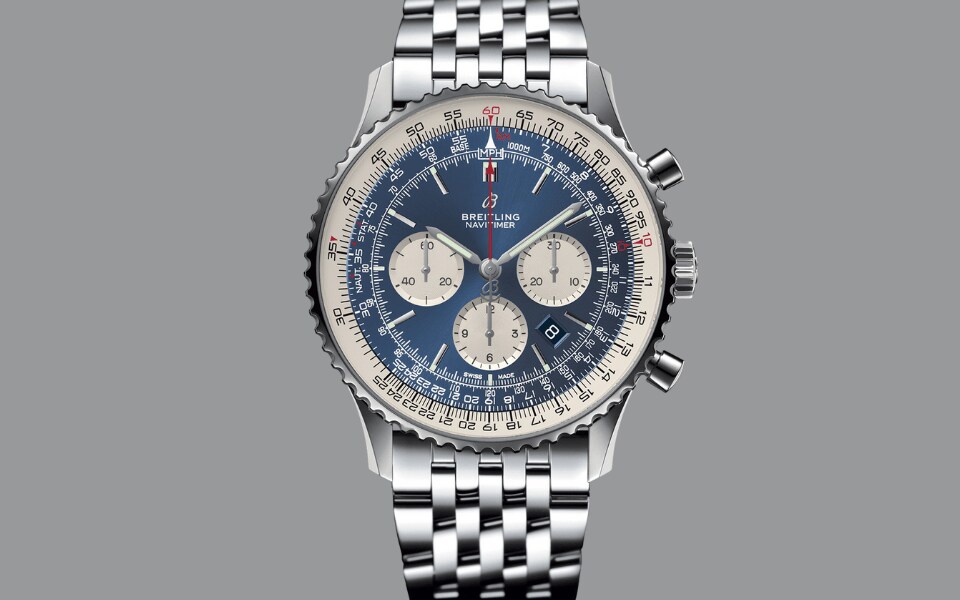
Breitling Navitimer
For the frequent fliers or fans of pilot watches’ timeless aesthetic, Breitling Navitimer 1 B01 Chronograph 46 – with its iconic look and exceptional performance – is an obvious choice.
…and your lifestyle
Timepieces are talking points, and once on your wrist you’ll find a combination of compliments and questions heading your way.
What model is it? Why did you go for it? Does it do this…or that?
This is why we believe taking your lifestyle into account when looking for a watch, is an important consideration. The reason behind your desire can heavily influence the purchase you make. By matching a timepiece to your lifestyle, you inadvertently answer questions about its requirements – do you need it to be waterproof for example? Similarly, by doing this you also match it to your fashion tastes meaning the watch will look effortlessly polished on your wrist and at home with the rest of your style.
First think about exactly why you want a watch. Is it a gift to yourself for a job well done at work? A necessity for you in your thrill-seeking hobbies? If you spend most of your free time outdoors or have an active lifestyle, you’ll need a watch that’s up to the challenge. So, functionality may be the most important aspect of your decision making.
Alternatively, consider where you will be wearing it most. If your work wardrobe consists of sleek and chic items, a dress watch may be the direction you want to begin your search in. Similarly, if you mainly wear muted colours and minimalist styles, a timepiece with all the bells and whistles may not sit naturally with your look.
“Whether at after-work drinks or on a far-flung vacation, your luxury timepiece is also along for the ride. So that means two things; it not only needs to look the part but live up to the adventure as well.” Faye Soteri
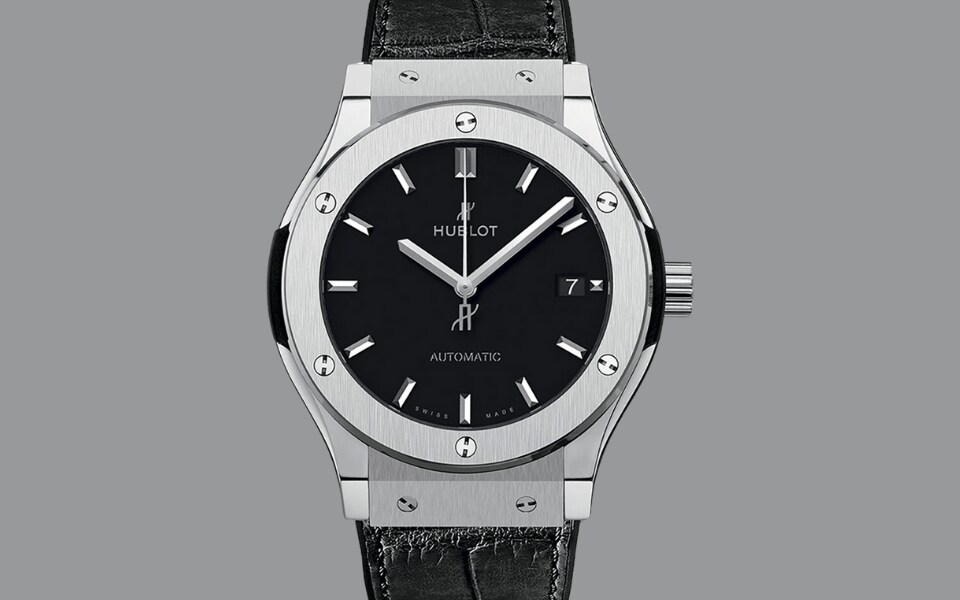
Hublot Classic Fusion Titanium
Those looking for a timepiece that will coordinate with most style choices, are likely to appreciate the understated and timeless appeal of the Hublot Classic Fusion Titanium.
And finally, take your time
Buying a luxury watch is a significant milestone, and one that should be done only when you feel completely comfortable and confident in your choice. Once you have an idea of budget and style, spend time looking around and getting to know the major players in the industry. We’re not saying you have to become an aficionado in horlogerie, but a good sense of a brand’s heritage or the sophistication of their mechanics can help you narrow your choices down. You may even wish to brush up on a few watch essentials, like movements to materials.
Similarly, certain brands are known for certain things – Breitling, for example, are synonymous with Pilot watches. This means that once you know the watch style you’re interested in, you can become more precise with the brands you look at.
During this research period, some good thinking points and questions to ask yourself include:
What can and can’t it do?
You may already have a complication in mind that is a dealbreaker when it comes to choosing your timepiece. Perhaps you need a world time zone or you’re completely set on having a moon-phase. If so, this will help narrow your search down a little. However, if you’re open to ideas take some time to research the different functionalities available and how they could be beneficial to you.
What is the retailer’s after-sales procedure?
Purchasing your watch is just the beginning of the story. With such a significant price tag attached, you want to be sure that there is a dedicated team available who can keep your timepiece ticking perfectly. Our Service Centres are run by our in-house team of master watchmakers. They carry out a comprehensive range of services to ensure your watch is fully cared for. We’re also extremely proud to be a brand-accredited agent of luxury Swiss horology houses, including Rolex, Breitling, and TAG Heuer.
What is the watch’s warranty?
These differ from timepiece to timepiece, so it’s vital to think about what’s important to you. Will you be using your watch within an active lifestyle and exposing it to different conditions? If so, a robust warranty may be necessary. Be sure to query what is and isn’t covered.
What is an ideal watch size?
We have a guide on how your watch should fit and feel on your wrist, so it’s worth taking a look for a more comprehensive understanding. However, a few quick tips for this are to remember that most watches have a case diameter of 32-44mm. Those with smaller wrists should opt for a 32-40mm case, and those with larger wrists may feel more comfortable wearing a case up to 46mm. The thickness of the case will also affect how it sits, for example, a watch of 10mm thickness will feel better under a shirt cuff than a larger one.
“No matter how experienced you are in watch buying; how many timepieces you may or may not already own, the beginning of your journey requires plenty of thought and can pose many questions. Don’t rush, do your research, reach out to those in the know, and most importantly, enjoy the process.” Mark Toulson
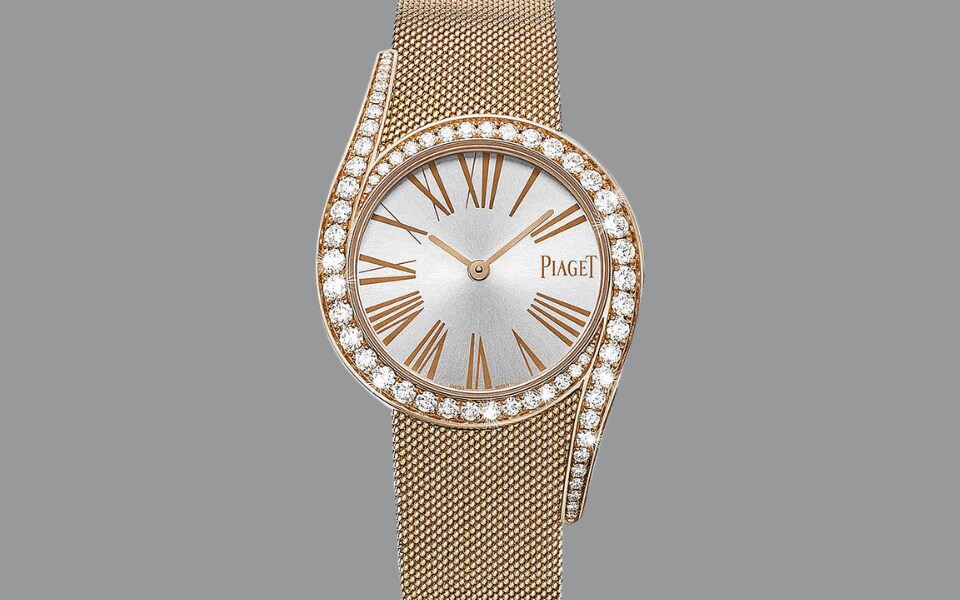
Limelight Gala Piaget
The delicate Limelight Gala from Piaget features a 32mm, 18ct rose gold milanese bracelet, making it an elegant choice that’s perfect for smaller wrists.
While there is a little science involved when it comes to choosing the right timepiece, we also believe in simply going with the model that catches your attention. If you can’t stop thinking about it, chances are it’s the perfect watch for you.

